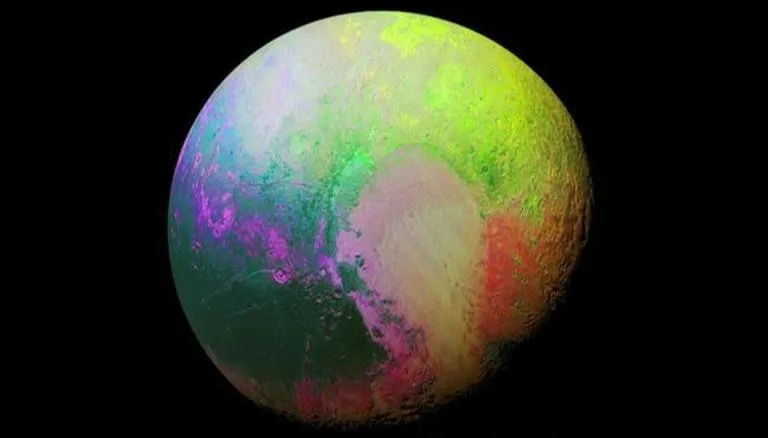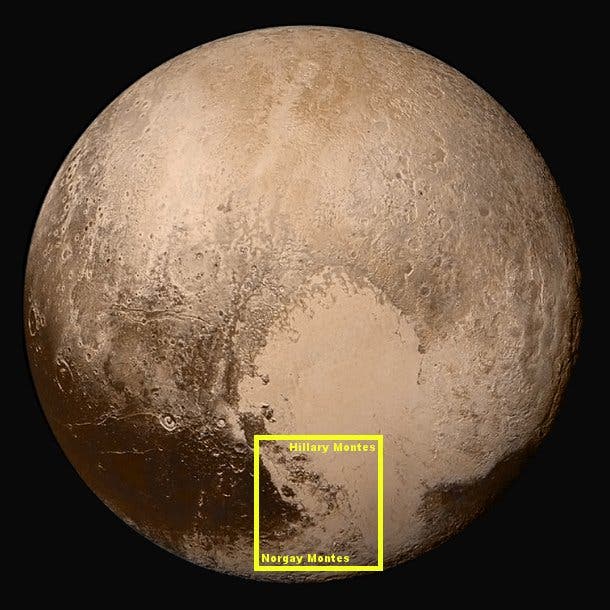
On Tuesday, NASA shared a dazzling picture of the dwarf planet Pluto, showing it in a riot of colors. The rainbow-colored world might look like it was splashed by a painter’s brush, but this is just a trick that scientists performed, showing a translated color image of Pluto taken by the New Horizons spacecraft in 2015 in order to better highlight the different regions on the planet.
The left side of the planet is mostly blue-green with purple swirls, while the right side ranges from a vibrant yellow-green at the top to a reddish-orange toward the bottom. This goes to show just how complex and varied Pluto actually is.
“Pluto has a complex, varied surface with jumbled mountains reminiscent of Europa, networks of carved-out valleys, old, heavily cratered terrain sitting right next to new, smooth icy plains, and even what might be wind-blown dunes,” NASA wrote on its Instagram page.
This particular image was taken during New Horizon’s six-month-long flyby of Pluto and its five tiny moons in the summer of 2015. The spacecraft first began its odyssey on January 19, 2006, on an Atlas V rocket from Cape Canaveral Air Force Station in Florida. A power outage and high winds had delayed two previous launch attempts, but New Horizons made it safely into space on the third try.
New Horizon’s flyby of Pluto revealed a strikingly rich planet, which we couldn’t really have imagined judging from the highly pixelated, low-resolution images astronomers took from a distance. The up-close observations exposed Pluto’s now-famous heart-shaped bright surface, known as Tombaugh Regio. It’s thought that this nitrogen-rich region may create winds that shape surface features, like a “beating heart”.

After visiting Pluto, New Horizons ventured into the distant Kuiper Belt, a doughnut-shaped ring of icy objects around the Sun, extending just beyond the orbit of Neptune.
New Horizons is still exploring the solar system, reaching a distance of 53 astronomical units from the sun (One AU is the average Earth-sun distance — about 93 million miles, or 150 million kilometers). The spacecraft’s extreme distance from Earth makes it only the fifth to venture so far from home, the others being Pioneer 10(opens in new tab) and Pioneer 11(opens in new tab), and Voyager 1(opens in new tab) and Voyager 2(opens in new tab). According to NASA, New Horizons should enter interstellar space in the 2040s.






